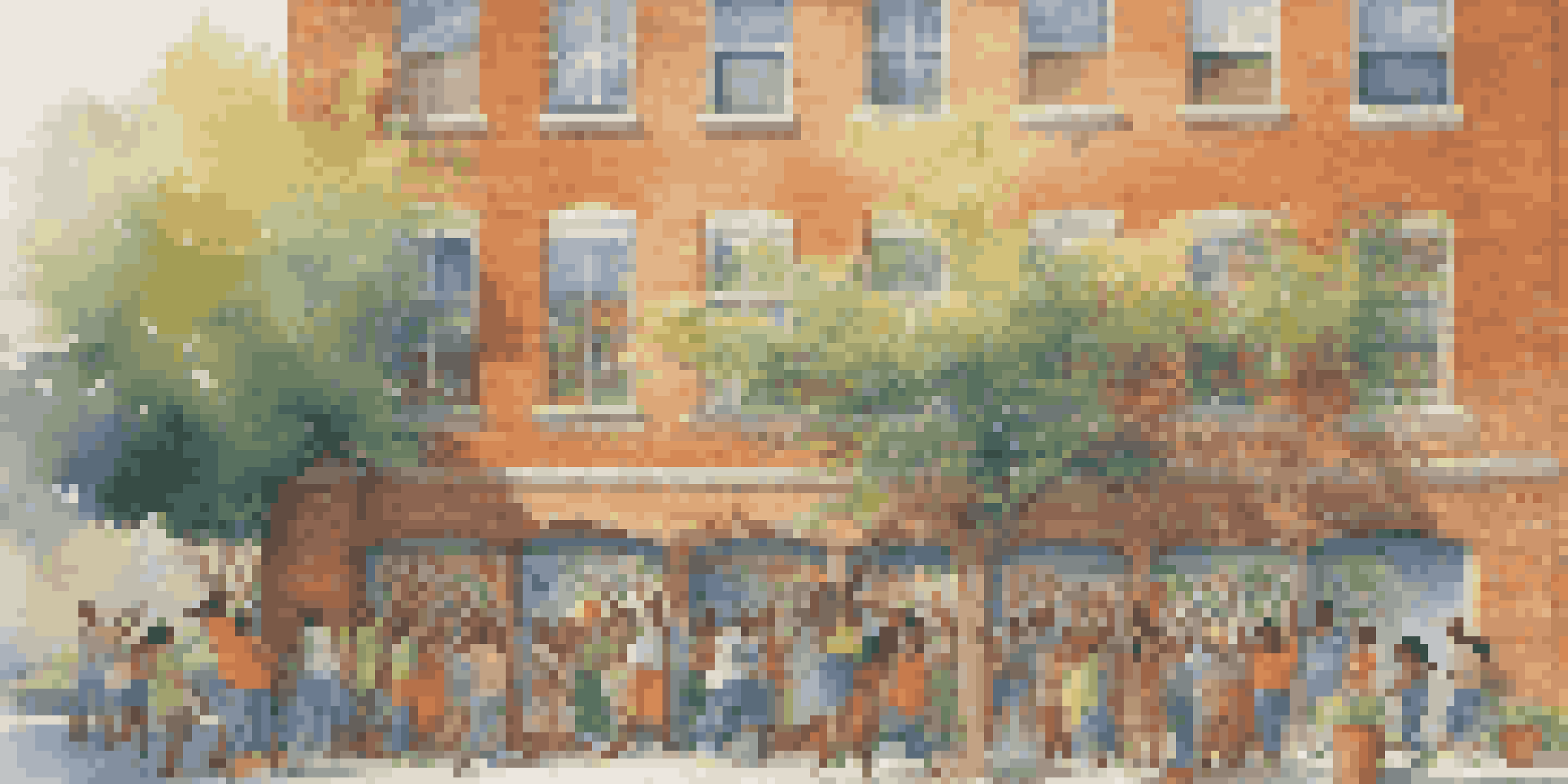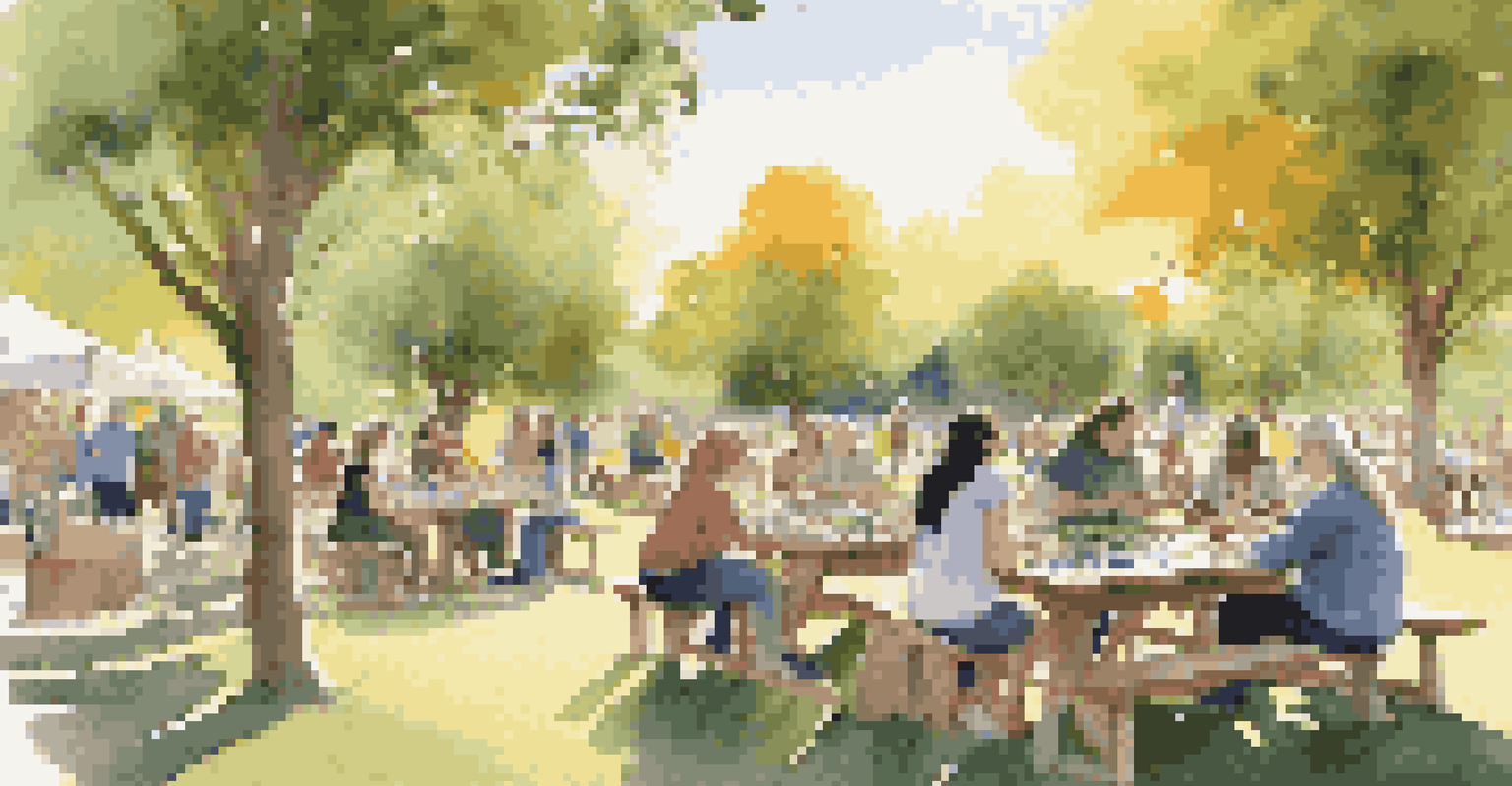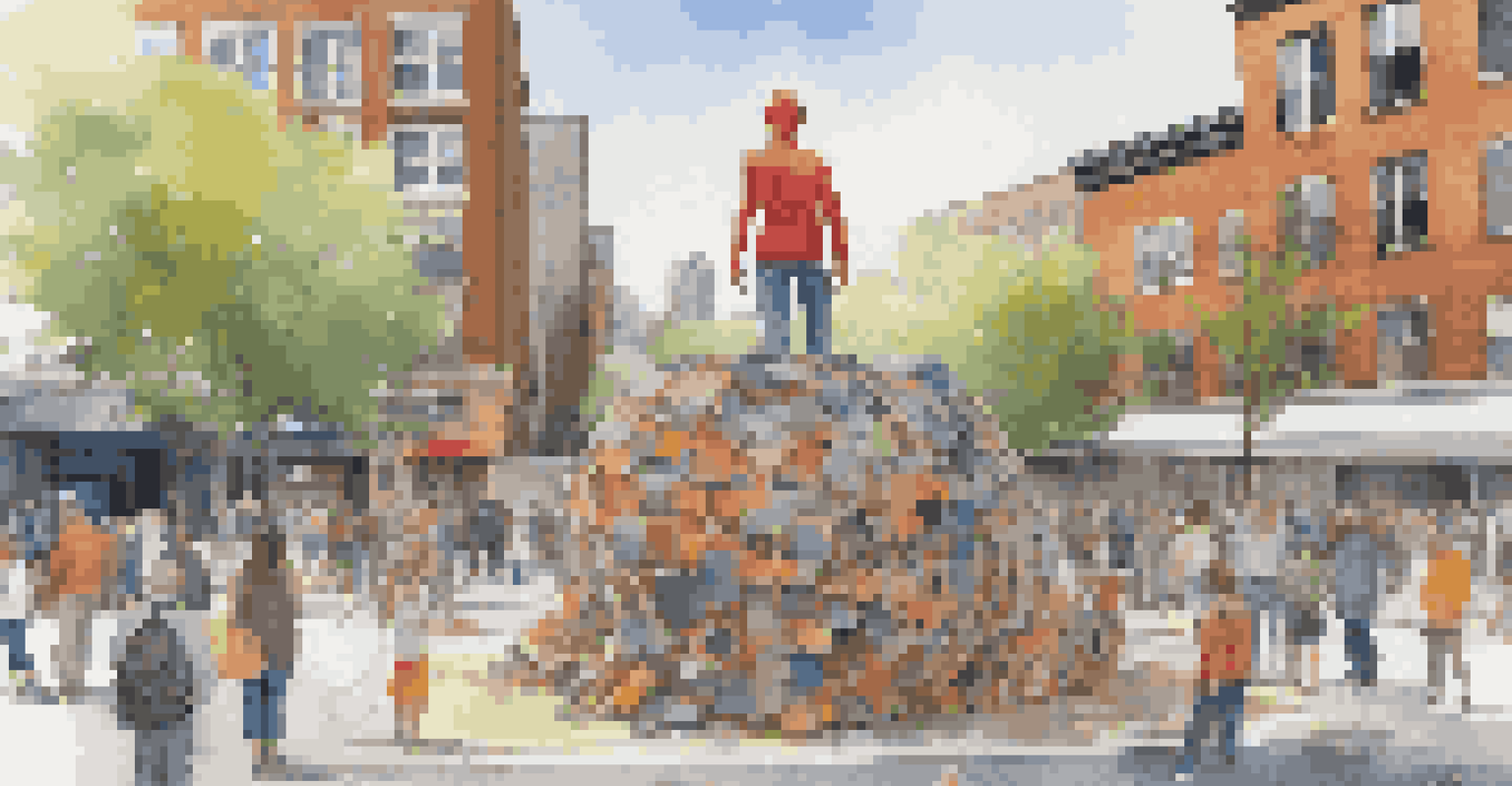The Role of Art in Addressing Social Inequities in Communities

Understanding Social Inequities in Communities
Social inequities refer to the unequal distribution of resources, opportunities, and privileges within communities. These disparities can manifest in various forms, such as economic inequality, educational gaps, and limited access to healthcare. Understanding these issues is crucial for addressing them effectively, and art can play a significant role in highlighting and challenging these social injustices.
Art is a way of recognizing and transforming the world we live in.
For example, a community with limited educational resources may see artists using their craft to create awareness about the importance of education. Through murals or performances, they can bring attention to the struggles local students face, thereby sparking conversation and action. This creative approach not only informs but also engages community members in a meaningful dialogue about their shared experiences.
Moreover, by portraying social inequities through visual or performing arts, artists can evoke empathy and understanding. This emotional connection is essential for mobilizing community members to advocate for change and participate in initiatives aimed at reducing these disparities.
Art as a Medium for Awareness and Advocacy
Art serves as a powerful medium for raising awareness about social issues. Artists often use their platforms to shed light on injustices that might otherwise go unnoticed, making the invisible visible. By addressing topics like poverty, discrimination, and environmental degradation, art can provoke thought and inspire action among community members.

For instance, street art can transform public spaces into canvases that tell compelling stories. A mural depicting the struggles of marginalized communities can serve as a conversation starter, encouraging passersby to reflect on their own roles in addressing these inequities. This transformation of public spaces fosters a sense of community ownership and responsibility.
Art Highlights Social Inequities
Artists use their creative platforms to raise awareness and provoke dialogue about social injustices within communities.
Additionally, art-based campaigns can amplify the voices of those who are often silenced. By collaborating with local artists, community organizations can create impactful projects that resonate with diverse audiences, ultimately pushing for policy changes and social reforms.
Fostering Community Engagement through Art
Art has the unique ability to bring people together, fostering community engagement. Workshops, art fairs, and collaborative projects encourage individuals from different backgrounds to come together to create and share their experiences. This sense of belonging is essential for building a cohesive community that understands and addresses social inequities.
The role of the artist is to make the revolution irresistible.
Consider community art projects where residents collaborate to create murals or sculptures that reflect their shared values and struggles. These projects not only beautify the neighborhood but also instill a sense of pride and ownership among participants. When community members actively engage in the creation process, they become more invested in the outcomes.
Moreover, these shared experiences can lead to lasting relationships and networks of support, enhancing the community's ability to tackle social issues collectively. By fostering connections through art, communities can create a ripple effect of positive change.
Art Education as a Tool for Empowerment
Art education plays a vital role in empowering individuals, particularly those from underserved communities. By providing access to art programs and resources, young people can develop their creative skills and express themselves in meaningful ways. This empowerment can lead to greater confidence and a sense of agency in addressing the social challenges they face.
For example, community centers offering art classes can serve as safe spaces where individuals learn to voice their concerns and share their stories. As they explore various art forms, participants not only enhance their skills but also gain insights into their identities and the issues affecting their lives. This self-discovery can be transformative.
Community Engagement Through Art
Collaborative art projects foster a sense of belonging and pride among community members, empowering them to address social issues collectively.
Additionally, art education can cultivate critical thinking and problem-solving skills, equipping individuals to navigate and challenge social inequities. By encouraging students to analyze and respond to their surroundings creatively, art programs can inspire a new generation of advocates for change.
The Role of Public Art in Social Change
Public art plays a significant role in social change by transforming everyday spaces into platforms for dialogue. Installations, sculptures, and performances in public areas can provoke thought and inspire conversations about pressing social issues. When art is accessible to everyone, it can reach a broader audience, thereby amplifying its impact.
An example of this is the rise of participatory art installations, where community members are invited to contribute their thoughts and experiences. Such projects not only empower individuals but also create a collective narrative that reflects the community's values and aspirations. This shared ownership can galvanize action and advocacy.
Furthermore, public art can challenge societal norms and prompt critical discussions. By addressing controversial topics, artists encourage viewers to confront uncomfortable truths and consider their roles in driving social change. This engagement is crucial for fostering an informed and active citizenry.
Collaboration Between Artists and Activists
Collaboration between artists and activists can amplify efforts to address social inequities. By merging creativity with advocacy, these partnerships can create compelling campaigns that resonate with a wide audience. Artists bring a unique perspective to social issues, using their craft to communicate complex ideas in accessible and engaging ways.
For instance, an artist might team up with a local nonprofit to develop a multimedia campaign that raises awareness about affordable housing. Through a combination of visuals, performances, and storytelling, they can create a narrative that highlights the struggles faced by residents, driving home the urgency of the issue.
Empowerment via Art Education
Art education provides individuals from underserved communities with skills and confidence to express themselves and advocate for change.
Such collaborations not only enhance the visibility of social causes but also mobilize resources and support. By working together, artists and activists can create a powerful synergy that inspires action and fosters community resilience.
The Lasting Impact of Art on Social Justice Initiatives
The impact of art on social justice initiatives can be profound and long-lasting. Creative expressions have the power to change perceptions, inspire empathy, and drive community action. As art continues to play a pivotal role in addressing social inequities, its influence will resonate across generations.
Take, for example, historical art movements that have shaped social movements, such as the Harlem Renaissance or the feminist art movement. These artistic expressions not only reflected the struggles of the time but also galvanized communities to fight for change. The legacy of these movements continues to inspire contemporary artists and activists alike.

Ultimately, as communities harness the power of art in their fight against social inequities, they cultivate a culture of resilience and hope. By embracing creativity as a tool for social transformation, they pave the way for a more equitable and just society.